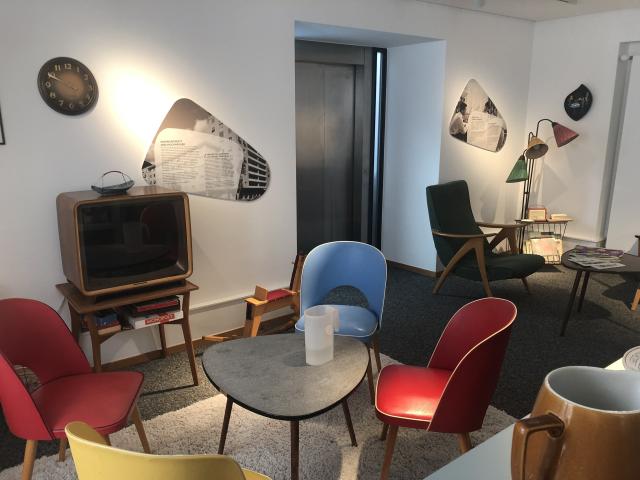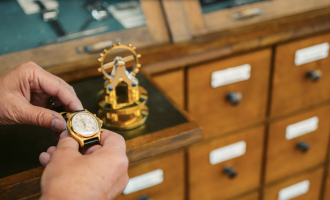
Stroll through Grenchen
Between the Aare landscape and the southern Jura chain lies Grenchen – the second largest municipality in the canton of Solothurn. At first glance, this town, with two train stations and its own airfield, doesn’t seem particularly spectacular. But this impression is deceptive. We visited the place in the Swiss midland and discovered: the beginnings of Swiss watch history are not only visible here, but can also be experienced here!
On the trail of the watch industry
DuBois et fils has an extensive stock of historical movements. These movements are robust, resistant and reliable. They have never been used and are a rarity. Almost 1000 of these witnesses of Swiss watch history have been reworked and revived by DuBois. Since last year, we have been tokenizing them and installing them in new watches.
Among these historic movements are products from A. Schild and FELSA SA – both watch companies with an eventful history. And both from Grenchen.
Bygone times come to life
A short walk from the Grenchen North train station – slightly downhill, along school buildings and parks – leads to the Museum of Cultural History. This is an excellent place to immerse oneself in the history of the local watchmaking industry.
In the entrance area, visitors are greeted by a whiff of the 1950s, the "golden age" of the Swiss watch industry: a kitchen with aged household appliances, cocktail chairs, kidney-shaped tables and flash lights are reminiscent of the times in which our parents and grandparents lived. The past comes alive here. It is the prelude to a voyage of discovery through the last hundred or so years of the watch industry.

The Schild watch family in Grenchen
On our tour of the museum, we come across the history of the Schild family, whose factory our movements – the caliber AS-1895 and caliber AS-1985 – can be traced back to: The Schild-Hugi couple married in 1873 and started a family with ten children. Adolf Schild first worked in his brother Urs's watch company, where he served as technical director before founding the watch movement factory A. Schild & Cie. His wife, Pauline Hugi, made a significant contribution to the success of this young factory with her own shop. Two portraits of the two spouses adorn the stairwell.

Upheaval, growth and crisis
The descendants of the Schild-Hugi couple converted the watch factory into a public limited company and changed its name to A. Schild SA, or ASSA for short. Among others, Adolf Schild-Behnisch (1879-1972), who joined his father's company in 1898, was responsible for this change. He first took over the technical management and from 1936 the commercial management.
The book "The Watch Patron and the End of an Era (2015)" by Bettina Hahnloser describes in detail the exciting developments in the Swiss watch industry. It reveals, for example, that ASSA rose to become the leading ebauche and finissage factory in the Swiss watch industry despite the First World War, which had plunged the industry into a deep crisis. The change from the pocket watch to the wristwatch led to a trend-setting upheaval. Adolf Schild-Behnisch of ASSA was open to innovation and was involved in 1926 when the world's first mass-produced wristwatch was presented to an international audience at the Basel trade fair.
After this peak, the watch industry faced new stumbling blocks. Market regulations put pressure on the industry. Changing structures and conditions strongly influenced the fortunes of the watch industry. The Second World War also presented many challenges. The watch industry underwent major changes.
1950s: "The Golden Age"
Following cyclical fluctuations in the world economy, there was rapid growth in the post-war years. ASSA achieved a breakthrough. To this day, the 1950s are referred to as the «Golden Age» of the Swiss watch industry.

Connection with DuBois et fils
It was during these golden times that our caliber AS-1895 was produced in Grenchen. DuBois et fils has since given it a new lease on life: such an original movement from A. Schild SA ticks in every DBF007 Diver watch. In addition, we have created a digital image for 330 of these automatic movements in the form of a so-called DBF token based on blockchain technology. This means the historic calibers live on not only in analog form, but also digitally.
Our caliber AS-1985 from the 1960s was also manufactured by A. Schild SA. Anyone who owns one of our tokenized movements can accompany it on its way to a DBF008. For a buyer this offers some further advantages associated.
A visit to Grenchen is worthwhile. The watch industry of yesteryear still characterizes the town today.


